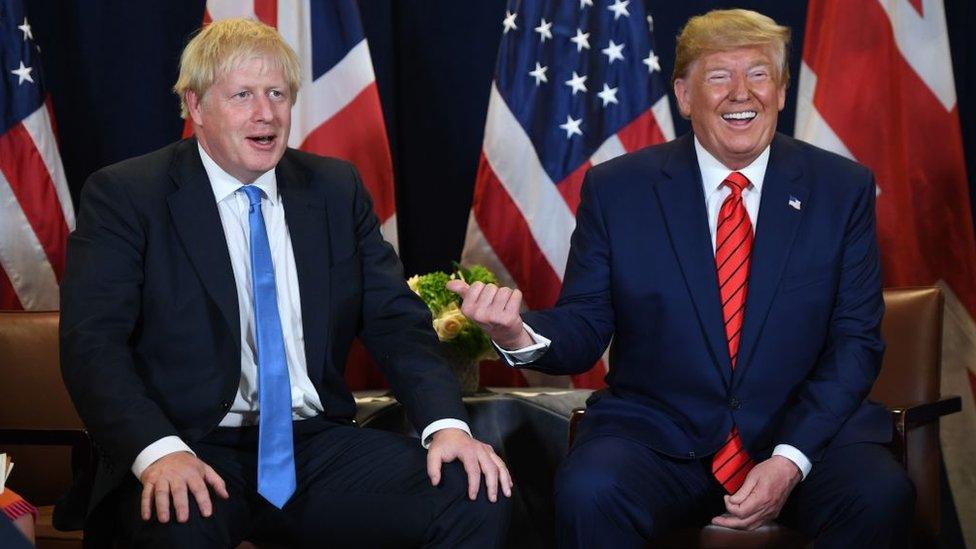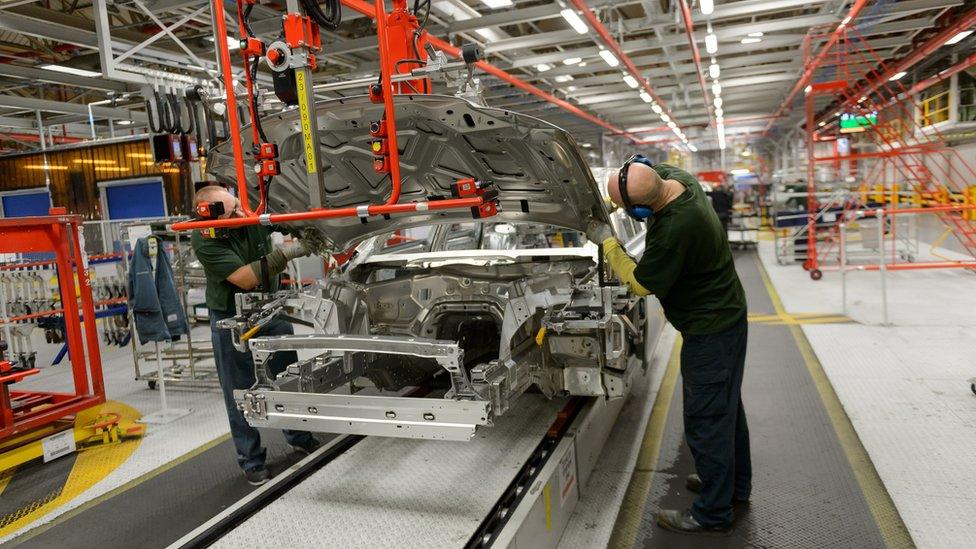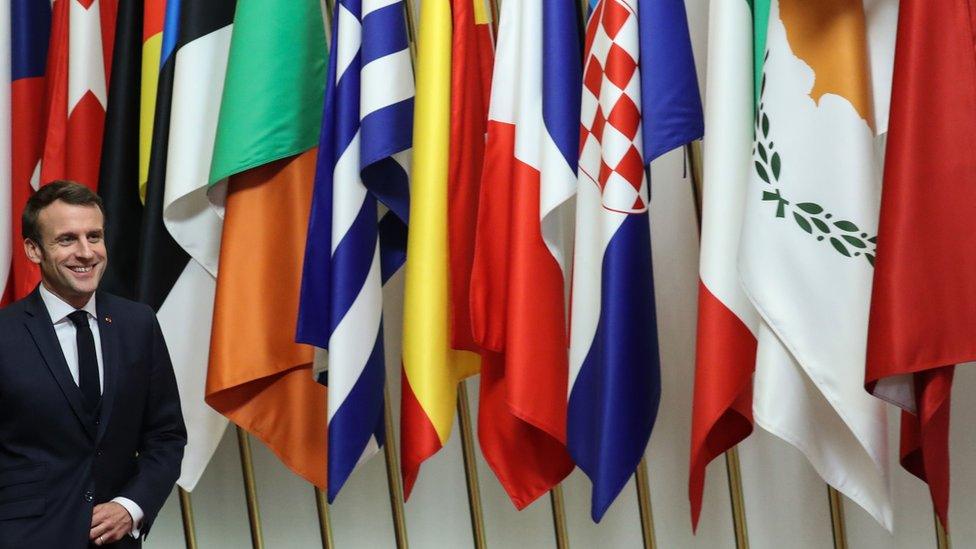Brexit: The UK's window of opportunity to do a US trade deal
- Published
- comments

The freedom to sign free trade deals with the likes of the US was, for some, the very point of Brexit.
Such a trade deal achieved totemic status during the 2016 Brexit referendum after President Obama described the UK as being at the "back of the queue" behind the EU. It is no coincidence the UK published its US trade deal negotiating objectives on Monday, the day official EU negotiations start.
But the government's publications show that the overall impact of such a deal is relatively small, and that it is not folding over the NHS and pharmaceuticals to get a quick deal with Washington DC.
The UK objectives seem to strengthen a key red line on medicines pricing that makes a quick deal rather a challenge. Not only does the document vow that the "NHS is not for sale", it also says it seeks provisions for pharmaceutical patents that "do not lead to increased medicines prices for the NHS".
Changes to the way medicines prices are calculated in the UK are in the US objectives, and are part of the US law that provides for authority to do trade deals.
Greater wiggle room exists in the objectives for US farm exports to the UK, and on the key issue of the acceptance of US food standards, as part of a trade deal. This is vital for the US, particularly in an election year, where farming interests are over represented in US democracy, both in the Senate, and in the Presidential electoral college.
The phrase "Uphold the UK's high levels of public, animal, and plant health, including food safety" does not guarantee that the existing type of protections developed under the European Union will continue. It provides some room for a "science-based" analysis of US standards.

The Department for International Trade has also published an assessment of the possible gains to the UK economy from such a deal. UK GDP is promised a £3.4bn boost, in the long term, if all UK-US tariffs are eliminated, with the biggest gains to exporters in North East England and Scotland.
That is a modest figure in terms of the overall economy, 0.16% of GDP, and in line with the calculations made by the Treasury in late 2018. It is important to note that the documents do not specify zero tariffs as a specific objective. In a more modest deal that kept some tariffs in sensitive areas, the government calculates the benefit would be £1.6bn in 15 years' time, or 0.07% of UK GDP.
Time is tight
The government stresses that "levelling up" trade deals benefit nations and regions such as Scotland and the West Midlands more because of the impact of more trade in salmon, whisky, and cars. The government also acknowledges a "re-allocation" of employment for about 30,000 jobs, with more jobs in energy, cars and construction, and fewer in financial services, insurance and retail. Young people aged 16-24 make up a disproportionate part of the workforce in the sectors forecast to lose jobs because of the deal.
The assessments do not necessarily make an urgent case for a US-UK trade deal. But there are reasonable questions about why this type of economic sectoral and regional analysis is valid for a prospective UK-US trade deal, but not so for the UK-EU deal. The same government analysis that previously say a 0.2% boost from new trade deals also suggested a negative impact of extra trade barriers incurred by a Canada-style free trade agreement or WTO terms tariffs between the UK and EU, far outweighing these kind of benefits from a US deal
The government is yet to confirm it will do the same economic exercise for the much larger EU deal. Privately, government sources have suggested there is no hurry, and UK-EU negotiator David Frost has criticised the economic methods used.
It is true to say that over 15 years there will be benefits from greater economic integration with the US, that can't be captured in this type of analysis. The deal will also target digital trade, and a "future proof" agreement that anticipates "rapid technological developments" such as artificial intelligence.
Time is tight to make sufficient progress on a deal before President Trump faces election in November, making this a small window of opportunity. While there is a clear mutual interest in doing a deal, these objectives do not suggest a government in a vast hurry to do this deal.
The question, if faced with such red lines, is if the US opts for a far more modest quick deal, well short of a free trade agreement, perhaps rolling back recently imposed tariffs. President Trump has recent form for this elsewhere.
- Published2 March 2020

- Published25 February 2020

- Published23 February 2020

